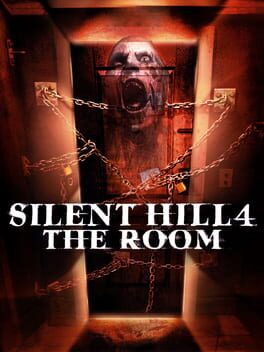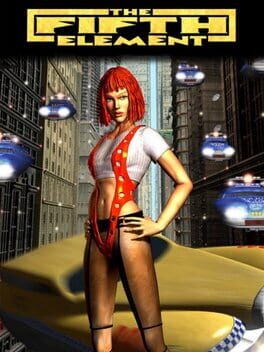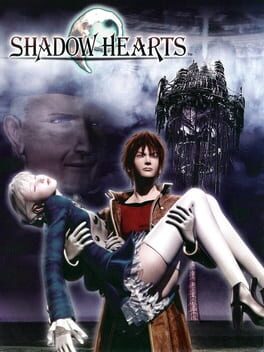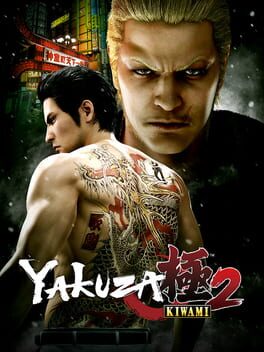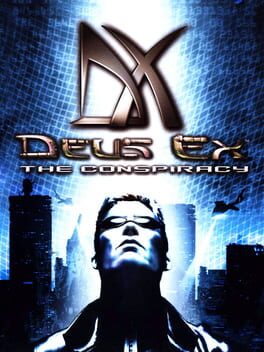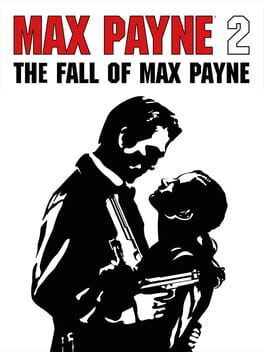tunasalad
183 reviews liked by tunasalad
This review contains spoilers
A lot of great ideas, with rough execution. The structure of the game being contingent on visiting your apartment to heal and deposit items meant that the first half was largely a breeze, whereas the second half was both extremely compelling and irritating at the same time. Definitely didn't enjoy revisiting every level over again with Eileen following slowly behind me. Still, I had a good time for the most part, and there were plenty of great scares.
The game's strongest aspect, and the thing that tied the whole experience together in the end, was the story of Walter Sullivan. I found myself completely enthralled with how he was mysteriously established as a cold-blooded killer, and especially how they managed to apply his story, as you later piece together, to the cold loneliness and isolation you feel when trapped in your own apartment as Henry. This was conveyed best in the portion where you're exploring the nightmarish version of Henry's apartment building, and you learn about Walter's past, all set to a haunting and soul-crushing, yet eerily comforting piece by Akira Yamaoka. It spoke to my favourite kind of horror - existentialism. The fear of becoming something you despise, the fear of being isolated, the fear of being forgotten - all embodied in a truly sick individual... that I both feared and pitied.
It's not as good as their previous entries, but it's still far better than almost anything that came after it. Team Silent had such a strong grasp on creating horror, and I fear we'll never experience anything close to their efforts ever again.
Fuck Konami, btw.
The game's strongest aspect, and the thing that tied the whole experience together in the end, was the story of Walter Sullivan. I found myself completely enthralled with how he was mysteriously established as a cold-blooded killer, and especially how they managed to apply his story, as you later piece together, to the cold loneliness and isolation you feel when trapped in your own apartment as Henry. This was conveyed best in the portion where you're exploring the nightmarish version of Henry's apartment building, and you learn about Walter's past, all set to a haunting and soul-crushing, yet eerily comforting piece by Akira Yamaoka. It spoke to my favourite kind of horror - existentialism. The fear of becoming something you despise, the fear of being isolated, the fear of being forgotten - all embodied in a truly sick individual... that I both feared and pitied.
It's not as good as their previous entries, but it's still far better than almost anything that came after it. Team Silent had such a strong grasp on creating horror, and I fear we'll never experience anything close to their efforts ever again.
Fuck Konami, btw.
Deus Ex
2000
The Fifth Element
1998
Hi-Fi Rush
2023
Shadow Hearts
2001
This is a game and a series that a close friend of mine has been telling me is great for years. I’ve actually even owned the first two Shadow Hearts games for years as well, but I’ve always been a little too intimidated by the mechanics to properly give them a try. But over this summer break, I resolved to finally play through the Shadow Hearts series, and that’s just what I did~. It took me about 38 hours to play through enough to get the good ending on the Japanese version of the game on real hardware.
Shadow Hearts follows the story of Yuri, a young, foul-mouthed young man with the power to fuse with the souls of monsters he destroys. The year is 1913. At the directions of a mysterious voice in his head, he saves a young woman named Alice on a trian in Japanese occupied Manchuria. The powerful and dark sorcerer that he saves her from seems to let them get away purely out of whimsy, and so begins our tale. A tale that is often as dark as it is camp, and it really begins as it means to carry on in that regard x3
Coming out barely a month before Final Fantasy X, Shadow Hearts was then and is now very much a game living in the shadow (excuse the pun) of other great games on the system, but that isn’t to say that it doesn’t have excellent writing itself as well. It has an approach to myth, legend, and history that blends the three together in such a way that gives its places a delightfully uncanny presentation, and the game is delightfully creepy as often as it is just silly with how oddball its, at times incredibly joyfully anachronistic, characters can be. Given the time and location of the setting, there is a LOT that could’ve gone wrong in this game’s depictions of the places and people that appear in it, but by and large it very deftly handles its respective subject matters. The main writer of Shadow Hearts has said that a major inspiration was the original Devil Man manga, and it really shows with how painstakingly he goes out of his ways to paint villains and heroes alike in shades of grey, never settling comfortably into flatly evil archetypes. The major theme of depression and overcoming it with the help of those around you (or not doing that) is handled really well, and this is easily one of my new favorite written games on the console as a result.
The only real negative I can give about the writing is a really awful homophobic stereotype found in one of the merchant NPCs. Given the skill that the rest of the game’s subject matters are handled, it was a really uncomfortable and unfortunate pitfall of the game’s writing, and while it is just a minor character, it’s hard to overlook it when the stereotype is quite as bad as it is. It wasn’t a deal-breaker for me (and I tend to be pretty strict about that kind of stuff), but I absolutely understand it being too uncomfortable a depiction for others, as it’s really no better in the English version, by all accounts.
The mechanics of Shadow Hearts really show the nature of a company composed largely of ex-SquareSoft developers. It’s a pretty standard turn-based game RPG with two rows for your party of 3 to occupy, but with a few important and ever present gimmicks here and there. First and foremost among these is the Judgment Ring system, which is something all of the Shadow Hearts games have but none more than this. Upon selecting an attack, a quick time event of a spinning ring pops up, and you need to press the command button when the spinning dial is over the colored sections. For normal attacks, each successive press gets you another hit in your little combo, and for spells, you need to hit more and more successes for successively more powerful spells (meaning the QTE’s get tougher as the game goes on). Later Shadow Hearts games have the ability to turn off the Judgment Ring system, but that is not the case in the first game . It’s not super difficult to get a hold of (and the whole reason I thought it was so hard at first was because I’d been doing it wrong ^^; ), but it’s something that’s ever present enough for both combat and out of combat mini-games that, if you don’t like it, it’ll likely drive you crazy.
The other major mechanical gimmick is the sanity point (SP) system, which other Shadow Hearts games would also continue to use. For every turn you take, your sanity ticks down by one until it hits zero. Once it hits zero, you go berserk and you can’t control that character anymore. This means you need to keep on top of keeping people’s sanity up with healing items (whose use also requires use of the Judgement Ring), especially during longer fights and boss battles. This is especially true for Yuri, who takes far more sanity points per turn when he’s fused into a more powerful demon form. While a lot of Yuri’s fusion forms really don’t matter much (the balancing of the game means that more often than not, less than half of them end up being really necessary or useful), you basically always want him in his fusion form if you can help it because it makes him just SO much more powerful, and he also doesn’t get spells to use outside of fusion forms. This ultimately just adds more balls into the air to juggle in boss fights, and it’s one more thing to keep track of in addition to health and mana and such. It’s not a great mechanic, but it’s not an outright bad one either.
All in all, the difficulty balancing is done really well, and it keeps a very persistent air of being just hard enough to be challenging while very infrequently being something you’d feel you’d need to grind to get past. The only real “well that sucks” aspect of boss fight design is usually getting to one and realizing that it has some status effect that it’ll inflict that will make your life miserable, so you’ll need to load your save and go grab some status immunity accessories at a vendor to take care of that. Thankfully, HP, MP, and even SP replenishing items are at shops as well as these immunity items, meaning you’re only ever a little bit of money away from making a fight or particular bit of grinding eminently survivable. It’s another aspect where I certainly wish the game were balanced in such a way that you didn’t need to rely on having stuff like a bunch of SP healing items or status effect immunity accessories to progress, but the game being that way isn’t inherently a bad thing. It’s just a little annoying.
The presentation of Shadow Hearts is absolutely excellent in a way you’d really expect from a dev team made of ex-SquareSoft developers. From the way the 3D models look to the pre-rendered environments they move around on, this almost has the vibe of a super PS1 game in certain respects. The music is also excellent, and the creature and character design is awesome too. The game has a lot of really gross and creepy monster and boss design, and I don’t blame them for apparently implementing Yuri’s fusion system entirely to use more of the sick-ass monster designs they’d made. They’re great! X3
Verdict: Highly Recommended. From the writing to the presentation to the fun & engaging gameplay, Shadow Hearts is an incredibly strong RPG on a system with no shortage of them. The fact that it’s such an early RPG on the console makes that fact all the more impressive. If you’re a fan of creepy, myth-filled (think SMT-vibes) settings and turn-based RPG gameplay, Shadow Hearts is absolutely not a game to miss out on.
Shadow Hearts follows the story of Yuri, a young, foul-mouthed young man with the power to fuse with the souls of monsters he destroys. The year is 1913. At the directions of a mysterious voice in his head, he saves a young woman named Alice on a trian in Japanese occupied Manchuria. The powerful and dark sorcerer that he saves her from seems to let them get away purely out of whimsy, and so begins our tale. A tale that is often as dark as it is camp, and it really begins as it means to carry on in that regard x3
Coming out barely a month before Final Fantasy X, Shadow Hearts was then and is now very much a game living in the shadow (excuse the pun) of other great games on the system, but that isn’t to say that it doesn’t have excellent writing itself as well. It has an approach to myth, legend, and history that blends the three together in such a way that gives its places a delightfully uncanny presentation, and the game is delightfully creepy as often as it is just silly with how oddball its, at times incredibly joyfully anachronistic, characters can be. Given the time and location of the setting, there is a LOT that could’ve gone wrong in this game’s depictions of the places and people that appear in it, but by and large it very deftly handles its respective subject matters. The main writer of Shadow Hearts has said that a major inspiration was the original Devil Man manga, and it really shows with how painstakingly he goes out of his ways to paint villains and heroes alike in shades of grey, never settling comfortably into flatly evil archetypes. The major theme of depression and overcoming it with the help of those around you (or not doing that) is handled really well, and this is easily one of my new favorite written games on the console as a result.
The only real negative I can give about the writing is a really awful homophobic stereotype found in one of the merchant NPCs. Given the skill that the rest of the game’s subject matters are handled, it was a really uncomfortable and unfortunate pitfall of the game’s writing, and while it is just a minor character, it’s hard to overlook it when the stereotype is quite as bad as it is. It wasn’t a deal-breaker for me (and I tend to be pretty strict about that kind of stuff), but I absolutely understand it being too uncomfortable a depiction for others, as it’s really no better in the English version, by all accounts.
The mechanics of Shadow Hearts really show the nature of a company composed largely of ex-SquareSoft developers. It’s a pretty standard turn-based game RPG with two rows for your party of 3 to occupy, but with a few important and ever present gimmicks here and there. First and foremost among these is the Judgment Ring system, which is something all of the Shadow Hearts games have but none more than this. Upon selecting an attack, a quick time event of a spinning ring pops up, and you need to press the command button when the spinning dial is over the colored sections. For normal attacks, each successive press gets you another hit in your little combo, and for spells, you need to hit more and more successes for successively more powerful spells (meaning the QTE’s get tougher as the game goes on). Later Shadow Hearts games have the ability to turn off the Judgment Ring system, but that is not the case in the first game . It’s not super difficult to get a hold of (and the whole reason I thought it was so hard at first was because I’d been doing it wrong ^^; ), but it’s something that’s ever present enough for both combat and out of combat mini-games that, if you don’t like it, it’ll likely drive you crazy.
The other major mechanical gimmick is the sanity point (SP) system, which other Shadow Hearts games would also continue to use. For every turn you take, your sanity ticks down by one until it hits zero. Once it hits zero, you go berserk and you can’t control that character anymore. This means you need to keep on top of keeping people’s sanity up with healing items (whose use also requires use of the Judgement Ring), especially during longer fights and boss battles. This is especially true for Yuri, who takes far more sanity points per turn when he’s fused into a more powerful demon form. While a lot of Yuri’s fusion forms really don’t matter much (the balancing of the game means that more often than not, less than half of them end up being really necessary or useful), you basically always want him in his fusion form if you can help it because it makes him just SO much more powerful, and he also doesn’t get spells to use outside of fusion forms. This ultimately just adds more balls into the air to juggle in boss fights, and it’s one more thing to keep track of in addition to health and mana and such. It’s not a great mechanic, but it’s not an outright bad one either.
All in all, the difficulty balancing is done really well, and it keeps a very persistent air of being just hard enough to be challenging while very infrequently being something you’d feel you’d need to grind to get past. The only real “well that sucks” aspect of boss fight design is usually getting to one and realizing that it has some status effect that it’ll inflict that will make your life miserable, so you’ll need to load your save and go grab some status immunity accessories at a vendor to take care of that. Thankfully, HP, MP, and even SP replenishing items are at shops as well as these immunity items, meaning you’re only ever a little bit of money away from making a fight or particular bit of grinding eminently survivable. It’s another aspect where I certainly wish the game were balanced in such a way that you didn’t need to rely on having stuff like a bunch of SP healing items or status effect immunity accessories to progress, but the game being that way isn’t inherently a bad thing. It’s just a little annoying.
The presentation of Shadow Hearts is absolutely excellent in a way you’d really expect from a dev team made of ex-SquareSoft developers. From the way the 3D models look to the pre-rendered environments they move around on, this almost has the vibe of a super PS1 game in certain respects. The music is also excellent, and the creature and character design is awesome too. The game has a lot of really gross and creepy monster and boss design, and I don’t blame them for apparently implementing Yuri’s fusion system entirely to use more of the sick-ass monster designs they’d made. They’re great! X3
Verdict: Highly Recommended. From the writing to the presentation to the fun & engaging gameplay, Shadow Hearts is an incredibly strong RPG on a system with no shortage of them. The fact that it’s such an early RPG on the console makes that fact all the more impressive. If you’re a fan of creepy, myth-filled (think SMT-vibes) settings and turn-based RPG gameplay, Shadow Hearts is absolutely not a game to miss out on.
Yakuza Kiwami 2
2017
Metal Gear Online
2008
even with the little setbacks of worse graphics and load times,this game is just deus ex on the ps2,near flawless port at that,and honestly i would score this five stars if it werent that the pc deus ex already has five stars.
so if you have a ps2 and want to play the greatest inmersive sim ever there you go,i also like the little differences it has with the pc version you see the effort that went to this
so if you have a ps2 and want to play the greatest inmersive sim ever there you go,i also like the little differences it has with the pc version you see the effort that went to this
I mean, it's almost as if they traveled forwards in time, read my review of the first game, saw the things I wished were improved, saw the things I didn't like, and just improved all of them.
The gameplay feels so much tighter than the first one, the graphics are frankly beautiful, the voice acting is better, even the story is better. My biggest issue with the first game's story was how generic it was due to it being so influential to future games. This game, while it still has some classic beats of detective thrillers and crime dramas, had a much more compelling and unique story. I was engaged the entire time.
This is also where you can start to really see the Remedy branding come in to play. The first game had a lot of features that are absolutely reminiscent of modern Remedy, but this is where you really see that flower blooming. Specifically, the various TV spots like Lords and Ladies and Address Unknown really add so much character, there are so many fun dream sequences/set pieces, and without spoiling anything, the Vincent Gognitti part screamed Remedy.
I described the first game as having a lot of potential to be one of my favorite games of all time if the remake irons out my issues with it. I dare say that Max Payne 2 COULD be on that favorites list, and I will say with certainty that it's going on my Honorable Mentions list as soon as I post this review.
The gameplay feels so much tighter than the first one, the graphics are frankly beautiful, the voice acting is better, even the story is better. My biggest issue with the first game's story was how generic it was due to it being so influential to future games. This game, while it still has some classic beats of detective thrillers and crime dramas, had a much more compelling and unique story. I was engaged the entire time.
This is also where you can start to really see the Remedy branding come in to play. The first game had a lot of features that are absolutely reminiscent of modern Remedy, but this is where you really see that flower blooming. Specifically, the various TV spots like Lords and Ladies and Address Unknown really add so much character, there are so many fun dream sequences/set pieces, and without spoiling anything, the Vincent Gognitti part screamed Remedy.
I described the first game as having a lot of potential to be one of my favorite games of all time if the remake irons out my issues with it. I dare say that Max Payne 2 COULD be on that favorites list, and I will say with certainty that it's going on my Honorable Mentions list as soon as I post this review.
